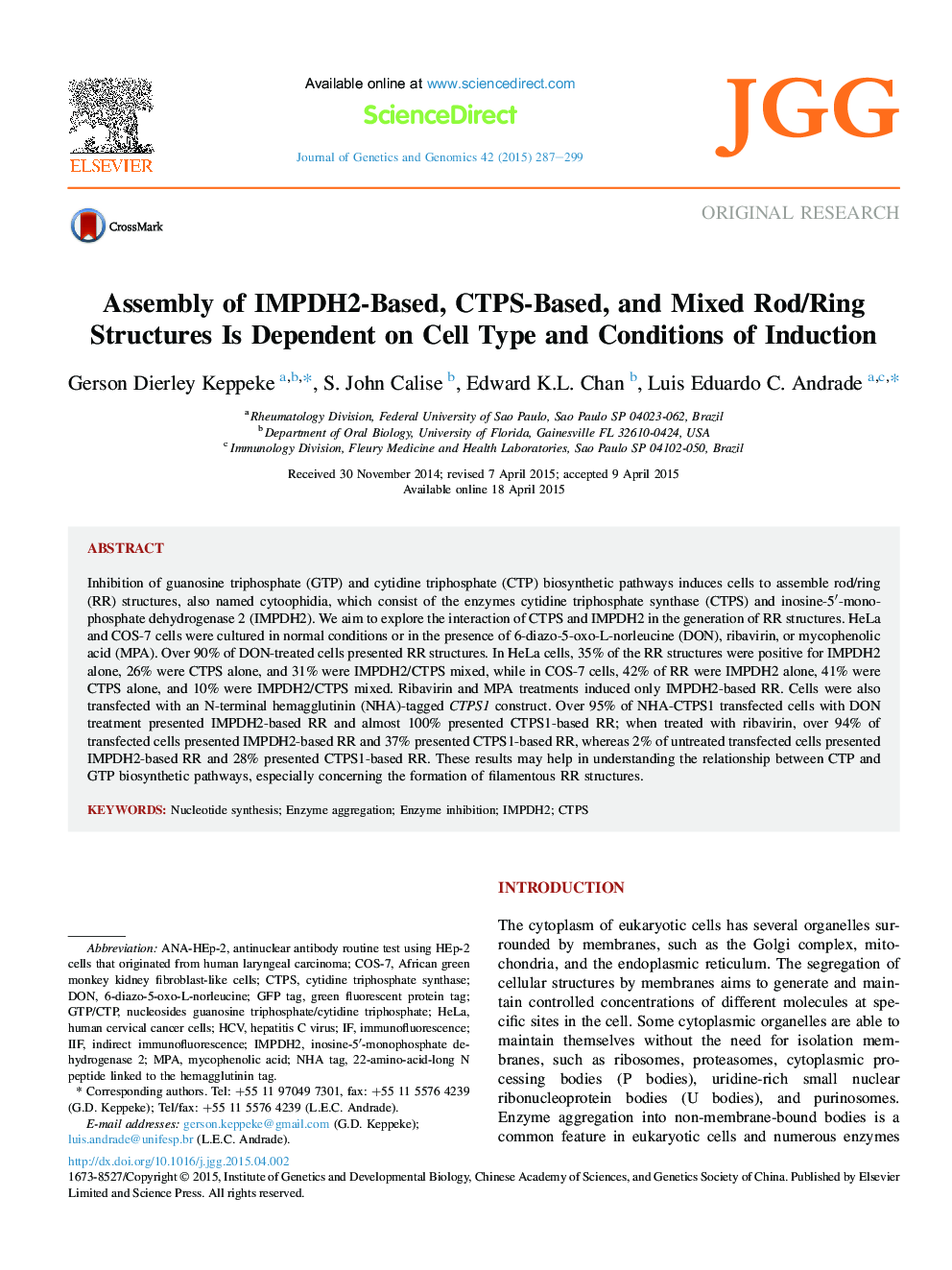| Article ID | Journal | Published Year | Pages | File Type |
|---|---|---|---|---|
| 5894043 | Journal of Genetics and Genomics | 2015 | 13 Pages |
Abstract
Inhibition of guanosine triphosphate (GTP) and cytidine triphosphate (CTP) biosynthetic pathways induces cells to assemble rod/ring (RR) structures, also named cytoophidia, which consist of the enzymes cytidine triphosphate synthase (CTPS) and inosine-5â²-monophosphate dehydrogenase 2 (IMPDH2). We aim to explore the interaction of CTPS and IMPDH2 in the generation of RR structures. HeLa and COS-7 cells were cultured in normal conditions or in the presence of 6-diazo-5-oxo-L-norleucine (DON), ribavirin, or mycophenolic acid (MPA). Over 90% of DON-treated cells presented RR structures. In HeLa cells, 35% of the RR structures were positive for IMPDH2 alone, 26% were CTPS alone, and 31% were IMPDH2/CTPS mixed, while in COS-7 cells, 42% of RR were IMPDH2 alone, 41% were CTPS alone, and 10% were IMPDH2/CTPS mixed. Ribavirin and MPA treatments induced only IMPDH2-based RR. Cells were also transfected with an N-terminal hemagglutinin (NHA)-tagged CTPS1 construct. Over 95% of NHA-CTPS1 transfected cells with DON treatment presented IMPDH2-based RR and almost 100% presented CTPS1-based RR; when treated with ribavirin, over 94% of transfected cells presented IMPDH2-based RR and 37% presented CTPS1-based RR, whereas 2% of untreated transfected cells presented IMPDH2-based RR and 28% presented CTPS1-based RR. These results may help in understanding the relationship between CTP and GTP biosynthetic pathways, especially concerning the formation of filamentous RR structures.
Keywords
Related Topics
Life Sciences
Biochemistry, Genetics and Molecular Biology
Developmental Biology
Authors
Gerson Dierley Keppeke, S. John Calise, Edward K.L. Chan, Luis Eduardo C. Andrade,
